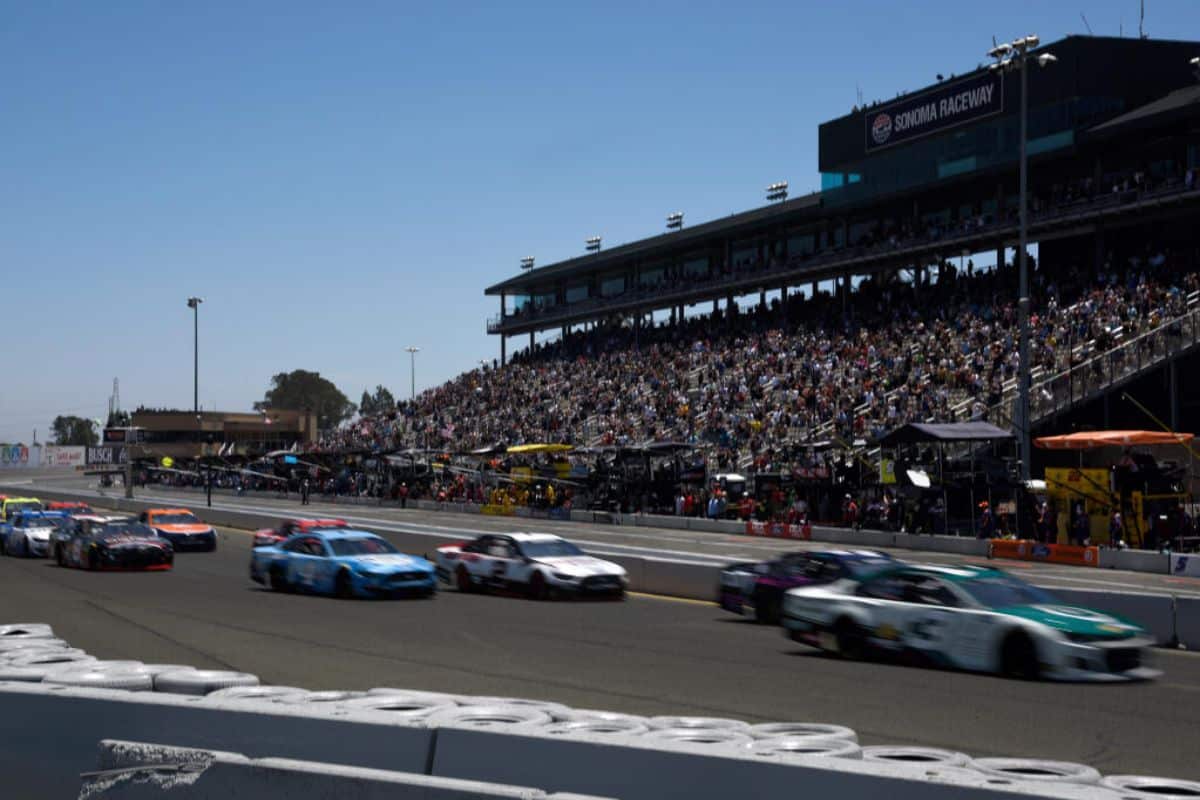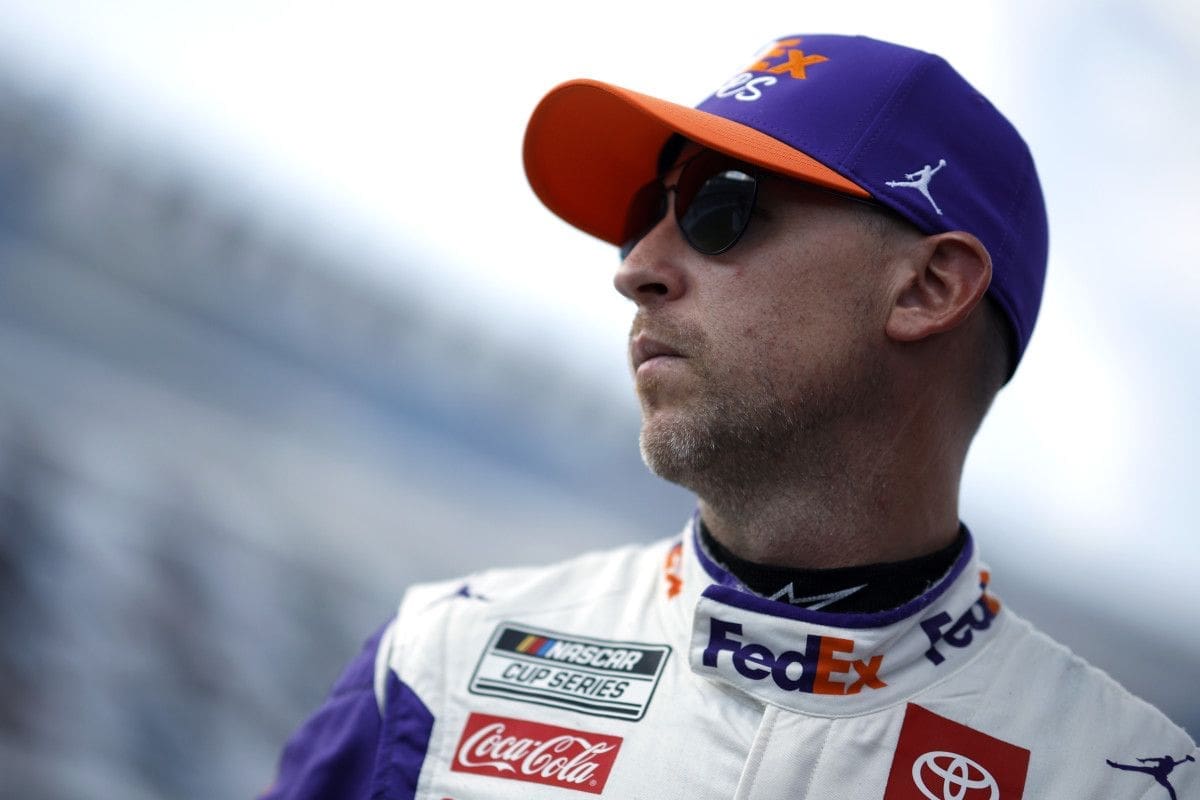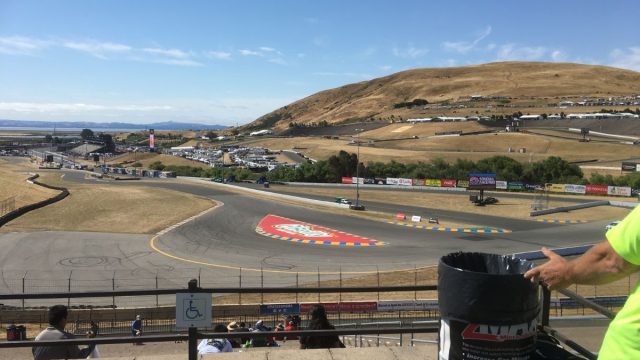Hamlin and Truex Jr. Unite for Sonoma Repave: The alliance of Denny Hamlin and Martin Truex Jr. on the eve of Sonoma Raceway’s repave signals a pivotal moment for NASCAR, as these veteran drivers anticipate significant grid challenges. The extensive track modifications, specifically incorporating white walls at turn 11, promise to reshape racing strategies and test driver adaptability. As Hamlin voices concerns about these changes, the duo’s collaborative efforts highlight a strategic approach to mastering the revamped circuit. What specific adjustments and strategies will these drivers employ to navigate the complexities of the new layout?
Key Highlights
- Hamlin and Truex Jr. support the Sonoma repaving efforts, noting positive improvements.
- Both drivers predict new grid challenges due to changes in track dynamics.
- Hamlin highlights concerns about static white walls impacting overtaking opportunities.
- Truex Jr. acknowledges the need for quick adaptation to the newly paved surface.
- The repave is seen as a chance for drivers to showcase adaptability and skill.
Overview of the Change
Initiating the transformation at Sonoma Raceway, the replacement of the traditional tire barrier at turn 11 with the white walls from the home stretch marks a significant alteration to the 1.99-mile road course’s infrastructure. This strategic change aims to improve both the safety and aesthetic appeal of the track, aligning with broader modernization efforts accompanying the new asphalt laid across the course.
The decision to implement white walls in place of the tire barrier is a calculated move. Tire barriers, while effective in energy absorption during impacts, have long presented maintenance challenges and aesthetic drawbacks. White walls, conversely, offer a cleaner, more professional appearance and are engineered to provide comparable safety benefits. The switch to white walls not only simplifies maintenance but also raises the visual standards of the circuit, presenting a more polished image to spectators and broadcast audiences alike.
From an analytical perspective, the introduction of white walls at turn 11 may influence driver behavior and race dynamics. The predictability and uniformity of white walls can change how drivers approach this critical turn, potentially reducing the margin for error. This could lead to tighter, more competitive racing as drivers adjust to the new barrier dynamics. Additionally, the change in barrier type may impact vehicle handling and safety protocols, necessitating adaptations in driving strategies and team preparations.

Track Representative’s Explanation
A Sonoma Raceway track representative explained that the decision to replace the traditional tire barrier with white walls at turn 11 was primarily driven by the need to ‘protect the integrity of the racing line.’ This alteration is seen as critical in maintaining the consistency and predictability of the track, which are pivotal for both the safety and performance of the drivers.
The representative further elaborated that the white walls are designed to offer a more resilient and uniform boundary that can withstand the rigors of high-speed racing. Unlike tire barriers, which can absorb impact but also shift or disintegrate upon collision, the white walls are expected to provide a stable and immovable barrier. This stability is intended to reduce the variability in race conditions that can arise from repeated impacts.
“We kind of looked back through the past few years, and a lot of the cars were almost every lap, they’re touching those tire barricades. It was moving by up to 20 feet during the course of a race. So went to NASCAR, their competition folks, and then we also met with the drivers competition committee both during the Coke 600 weekend, and they were good with it.” – Track officials
Moreover, from a safety perspective, the change aims to minimize the potential for debris on the track, which can pose significant hazards. Tire barriers, while effective in some ways, tend to scatter debris when struck, creating unpredictable conditions. The white walls, conversely, are less likely to break apart, maintaining a cleaner and safer racing environment.
The representative acknowledged that any modification to the track brings a period of adjustment. The decision to implement white walls was made after extensive consultation with safety experts and a thorough analysis of race dynamics.
Denny Hamlin’s Concerns
While track representatives defend the installation of white walls at turn 11, Denny Hamlin raises reservations about the impact of this change on racing dynamics. Hamlin, a seasoned NASCAR driver, emphasizes the potential for unintended consequences that could emerge from this modification. His primary concern revolves around the shift in racing behavior that the white walls may induce, particularly regarding the drivers’ approach and exit strategies through turn 11.
Hamlin points out that the historical interaction between cars and the tire barricades has played a significant role in shaping racing outcomes at Sonoma. The tire barricades, which moved substantially during races, introduced a variable element that drivers had to navigate. This variability often tested drivers’ adaptability and skill, contributing to the competitive nature of the race. The installation of the white walls, while intended to add consistency and safety, could inadvertently eliminate this dynamic aspect, potentially leading to more predictable and less thrilling races.
“It’s a little bit blind, but you’re kind of getting used to it and understanding the radius of how far I got to turn the wheel to make the corner without hitting it. So I think there will definitely be a few that cut it too tight and risk knocking a toe link out, but hopefully it’s not us.“ – Hamlin
Moreover, Hamlin expresses concern over how this change might affect overtaking opportunities. Turn 11 has traditionally been a key overtaking zone, where drivers could exploit the movement of the tire barricades to gain an edge. The new, static white walls could reduce these opportunities, making it harder to execute strategic passes and altering race strategies.

Turn 11 Challenges and Driver Feedback
How will the new, static white walls at Turn 11 impact the intricate balance of safety and competitive racing at Sonoma Raceway? This question looms large as drivers prepare to tackle one of the tightest and slowest corners on the circuit, now made even more challenging by the recent changes.
Turn 11 has always been a critical juncture, demanding precision braking and strategic maneuvering. However, the introduction of static white walls has altered the landscape greatly.
Previously, drivers could exploit the flexibility of a movable wall to maneuver through a lower lane, gaining extra grip on the painted section. This not only provided additional visual cues but also offered an escape route in tight situations. With the new setup, these luxuries are gone, leading to heightened concerns over potential wrecks.
Denny Hamlin’s measured response during practice encapsulates the cautious optimism shared by many. He noted the ‘blind’ nature of the corner, emphasizing the need to adapt quickly to the new radius to avoid damaging the car. His observations are echoed by Martin Truex Jr., who pointed out the increased likelihood of contact due to the absence of escape routes, making Turn 11 a hotspot for potential incidents.
“It is going to be a little bit trickier. We have seen contact in that corner, many times before, so there is not really anywhere to escape when you have a guy kind of squeezing you going in there, so it could cause some problems, we will see.” -Martin Truex Jr
- Reduced Visual Guides: The static white walls eliminate previously relied-upon markers for maneuvering the bend.
- Increased Risk of Crashes: Minor scrapes could escalate into significant damage without the flexibility of the movable wall.
- Adapting Driving Techniques: Drivers must quickly learn to judge the new radius to prevent costly errors.
- Crowded Corner Dynamics: The lack of escape options heightens the potential for collisions during tight racing.
Repaved Sections of the Track
The recent repaving of Sonoma Raceway has garnered positive feedback from drivers, including Denny Hamlin, who noted the smoothness and general improvement despite visible patches. Hamlin, who previously criticized the track’s maintenance and its owner, Marcus Smith, has appreciated the latest efforts to enrich the racing surface. His earlier concerns about insufficient reinvestment appear to have been mitigated by the current state of the track.
Hamlin, driving the #11 JGR car, observed that the patches, while visible, do not impact the driving experience.
“Yeah, I mean, there’s definitely a lot of patches on it, but everything has been pretty smooth. Uh, you know, I hadn’t noticed any part of the track that um you could feel the patches; certainly, you can see them. But you can’t feel them so overall I think um you know it ended up a net um you know pretty good result considering all all the extra work they had to put into it.” – Hamlin
This improvement is significant, as road courses have historically posed challenges for Hamlin. The smoothness of the new surface could potentially boost his performance and strategy on the track. The repaving has addressed previous concerns, creating a more consistent and reliable racing environment for all competitors.
As the drivers adapt to the freshly laid asphalt, the focus will shift to how these changes influence race dynamics. The alterations may present new challenges, but they also offer an opportunity for drivers to demonstrate their adaptability and skill.

News in Brief : Hamlin and Truex Jr. Unite for Sonoma Repave
The collaboration between Hamlin and Truex Jr. ahead of the Sonoma Raceway repave underscores a strategic response to anticipated challenges.
The introduction of white walls at turn 11 and other significant track changes are expected to alter racing dynamics and strategies.
Their preparations highlight a collective flexibility aimed at optimizing performance on the newly transformed circuit.
This proactive approach exemplifies the drivers’ commitment to adapting to evolving conditions and maintaining a competitive edge in the face of grid unpredictabilities.
ALSO READ: Sonoma’s Recent Transformations Set to Spark NASCAR’s Hottest Race
